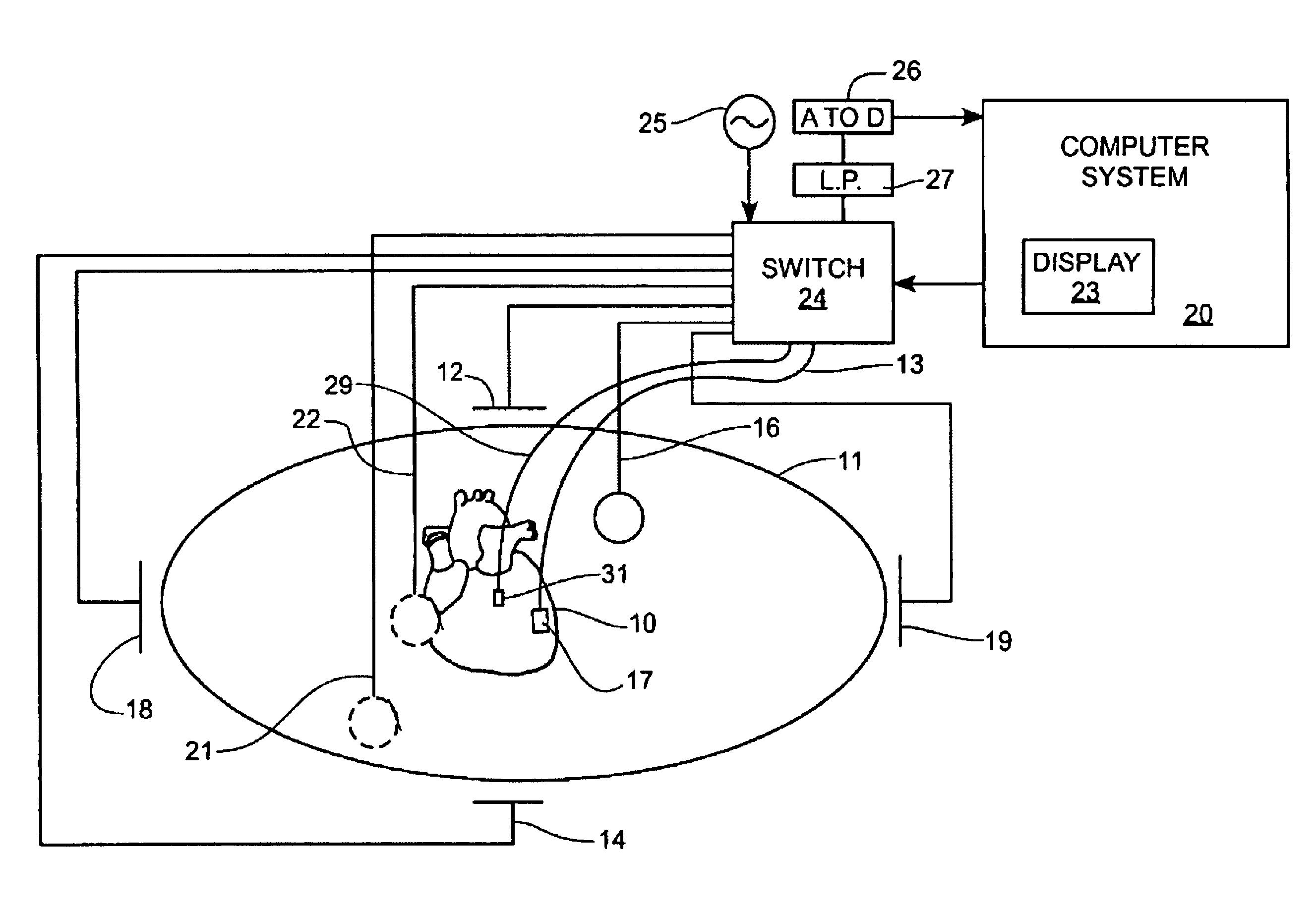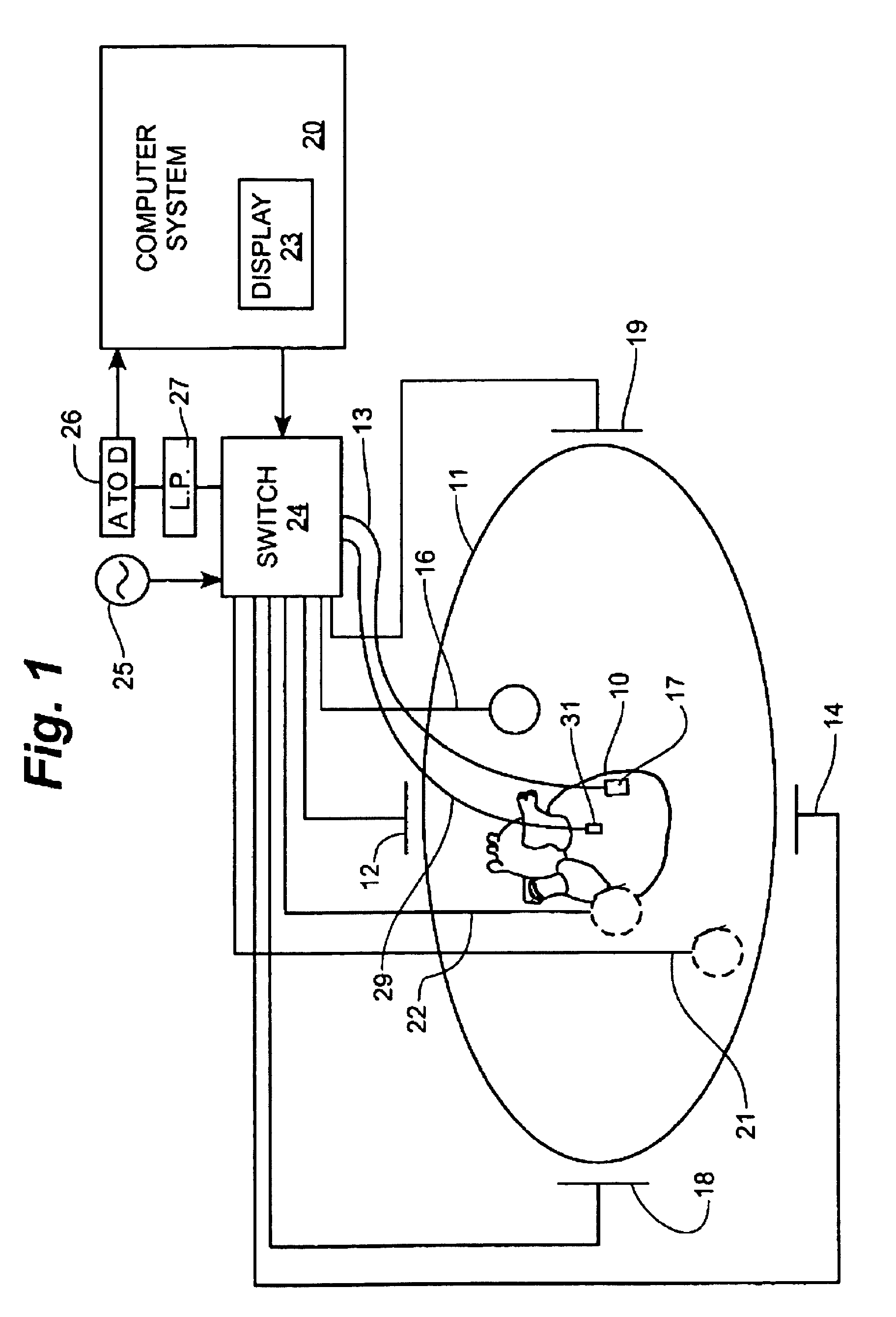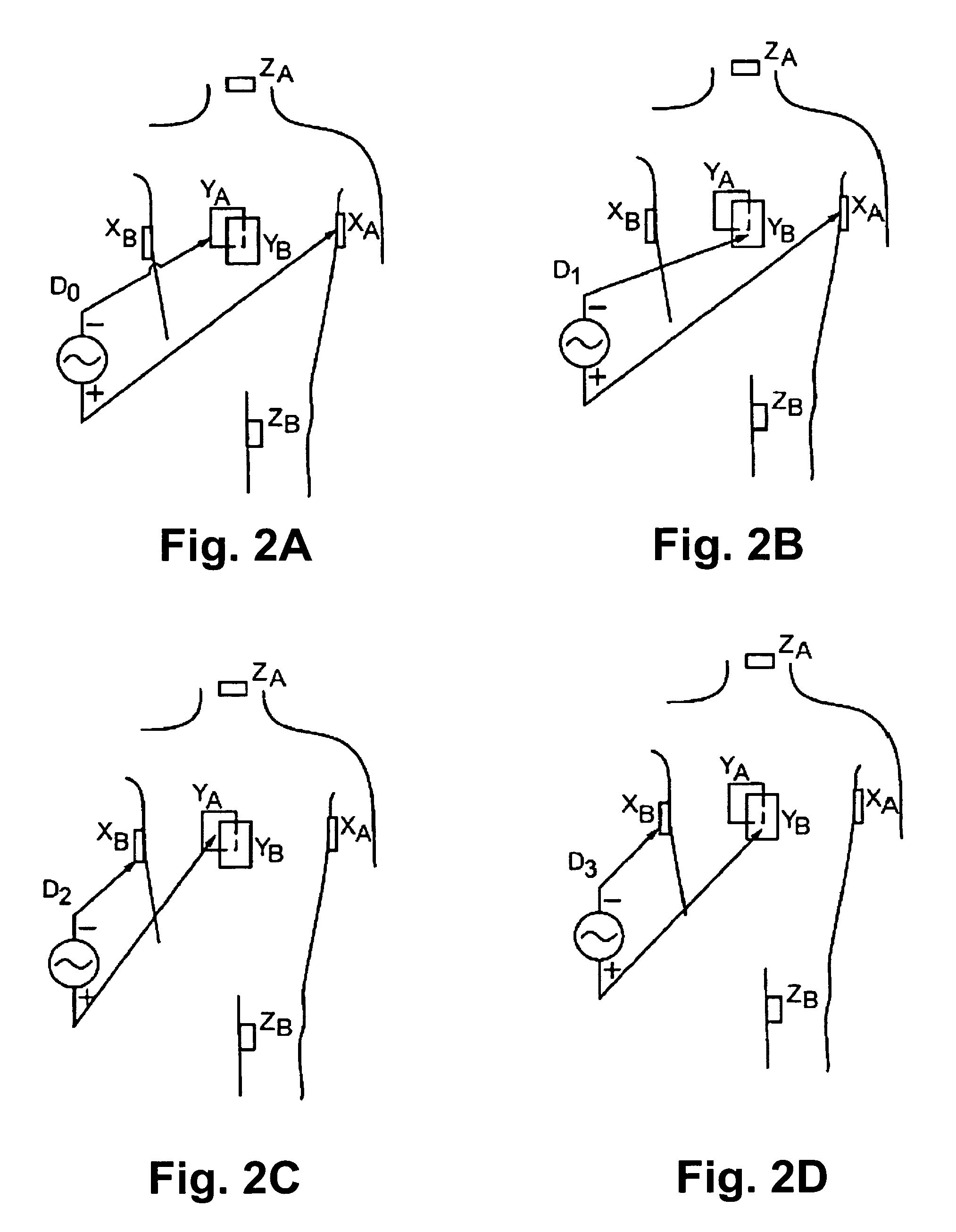Method of scaling navigation signals to account for impedance drift in tissue
a navigation signal and impedance drift technology, applied in the field of positioning and mapping electrophysiology catheters and ablation catheters, can solve the problems of 2 percent of intolerable error sources and errors in the position of measurement electrodes, and achieve the effect of accurate positional reading of measurement electrodes
- Summary
- Abstract
- Description
- Claims
- Application Information
AI Technical Summary
Benefits of technology
Problems solved by technology
Method used
Image
Examples
Embodiment Construction
[0015]One of the primary goals of cardiac electrophysiology mapping is to locate with some certainty the position of an electrode within a cardiac cavity. An electric navigation field is created within a patient's body on each of the three principal axes by driving a constant current. If the impedances measured in the body are constant, then the potentials on each axis measured at a location, with respect to a reference electrode at a static location, will remain at a constant potential over time. Thus, if a location site is marked in the heart, one may return to that site with a catheter electrode in the future and be confident that if the measured navigation potentials, or impedance, are the same as before, the anatomic location is the same.
[0016]FIG. 1 depicts a schematic diagram of an exemplary electrophysiology mapping or ablation system. The patient 11 is depicted as an oval for clarity. Three sets of surface electrodes (e.g., patch electrodes) are shown applied to a surface o...
PUM
| Property | Measurement | Unit |
|---|---|---|
| impedance coordinates | aaaaa | aaaaa |
| impedance coordinates | aaaaa | aaaaa |
| impedance coordinates | aaaaa | aaaaa |
Abstract
Description
Claims
Application Information
 Login to View More
Login to View More - R&D
- Intellectual Property
- Life Sciences
- Materials
- Tech Scout
- Unparalleled Data Quality
- Higher Quality Content
- 60% Fewer Hallucinations
Browse by: Latest US Patents, China's latest patents, Technical Efficacy Thesaurus, Application Domain, Technology Topic, Popular Technical Reports.
© 2025 PatSnap. All rights reserved.Legal|Privacy policy|Modern Slavery Act Transparency Statement|Sitemap|About US| Contact US: help@patsnap.com



